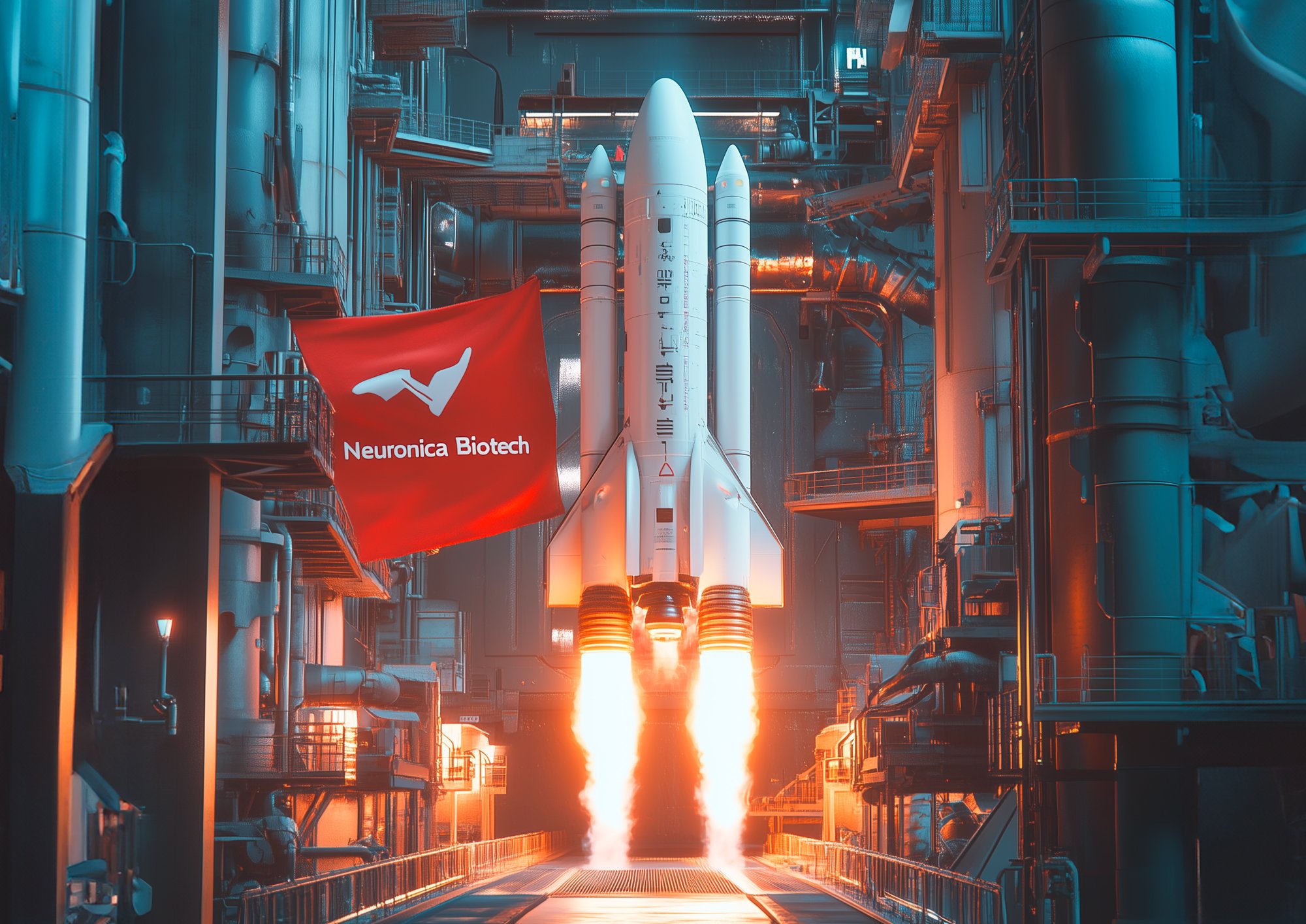
Space Transfer
Extending human legacy beyond Earth
Introduction to Space Transfer
Space Transfer is a visionary component of Neuronica Biotech’s commitment to ensuring the continuity of cognitive identity beyond the confines of Earth. By leveraging advanced Brain-Machine Interface (BMI) technology and robotic integration, individuals may transition to extraterrestrial colonies when Earth’s environment becomes unsustainable or unsuitable for human life. This process allows clients to not only preserve their memories and identity but also thrive in entirely new habitats designed for robotic and human-robot hybrid communities.
Space Transfer embodies the ultimate extension of human legacy, combining cutting-edge aerospace technologies with Neuronica Biotech’s expertise in cognitive preservation and robotic embodiment. It opens the door to a future where humanity, in its evolved form, can explore, adapt, and persist beyond planetary boundaries.
Current State of Space Transfer Technologies
Space exploration and extraterrestrial habitation are advancing rapidly, driven by collaborations between governments, private enterprises, and innovative startups. Key developments in the field include:
Launch and Transport Systems: Reusable rockets from organizations such as SpaceX (Falcon 9 and Starship) and Blue Origin (New Shepard) have significantly reduced the cost of transporting payloads into orbit, making space transfer more accessible.
Habitat Construction: NASA’s Artemis program and partnerships with private companies aim to establish sustainable lunar habitats as a precursor to Martian colonization.
Cryogenic Transport: Advanced cryogenic preservation systems are under development, enabling the secure transfer of BMI-stored cognitive data during interplanetary travel.
Collaborative Ecosystems: International agencies such as Roscosmos (Russia), CNSA (China), and ESA (European Space Agency) are collaborating to build modular, scalable habitats suitable for robotic and hybrid populations.
These technological advancements provide the infrastructure necessary to realize the potential of space transfer, ensuring secure and reliable transportation of cognitive data and robotic entities.
Key Global Contributors to Space Transfer
The realization of Space Transfer relies on the expertise and innovation of leading aerospace organizations:
SpaceX: With its reusable rocket technology and ambitious plans for Martian colonization, SpaceX provides a reliable platform for long-distance space transport.
NASA: Pioneering the establishment of sustainable habitats on the Moon and Mars, NASA contributes to the creation of safe extraterrestrial environments.
Roscosmos: Russia’s space agency continues to develop robust launch systems and orbital infrastructure for interplanetary missions.
CNSA: China’s space agency, through missions such as Tianwen-1, has demonstrated its capability to explore and establish Martian infrastructure.
ESA: The European Space Agency advances space exploration through collaborative missions and habitat development for hybrid human-robot populations.
These contributors form the backbone of the Space Transfer initiative, ensuring a seamless integration of BMI technologies into extraterrestrial missions.
Neuronica Biotech’s Commitment to Space Transfer
Neuronica Biotech is dedicated to enabling cognitive continuity in extraterrestrial environments through the following initiatives:
BMI Data Transport: Developing secure methods to transfer BMI-stored memory via digital chips or robotic bodies, ensuring that identity and functionality remain intact during space transit.
Partner Collaborations: Establishing partnerships with leading aerospace organizations to guarantee reliable transport and habitat integration for robotic entities.
Adaptation Research: Conducting studies to optimize robotic functionality in extreme extraterrestrial environments, including low gravity, radiation exposure, and limited resources.
These efforts ensure that Space Transfer not only preserves cognitive identity but also empowers individuals to thrive in their new extraterrestrial existence.
Detailed Process of Space Transfer
The Space Transfer process is meticulously designed to ensure the secure and seamless relocation of cognitive identity:
Pre-Launch Preparation:
BMI-stored cognitive data is encoded and securely transferred to digital chips or robotic systems.
Necessary hardware, including robotic bodies, is prepared for space transport based on destination requirements.
Transport Execution:
Partner organizations, such as SpaceX or CNSA, facilitate transport using state-of-the-art launch systems.
During transit, cognitive data and robotic bodies are maintained under optimal conditions, leveraging cryogenic or insulated environments as needed.
Habitat Integration:
Upon arrival, robotic entities are activated within pre-established habitats designed for hybrid human-robot communities.
Cognitive identity is fully operationalized, allowing for immediate adaptation to the new extraterrestrial environment.
Post-Arrival Adaptation:
Specialized AI programs facilitate acclimation to extraterrestrial conditions, such as low gravity or extreme temperatures.
Robotic bodies are calibrated for habitat-specific tasks, ensuring full functionality and societal integration.
Ethical and Societal Implications of Space Transfer
Space Transfer introduces profound ethical and societal considerations, including:
Cognitive Identity in Space: The preservation and transport of memory and identity across planetary boundaries raise questions about individuality and continuity in extraterrestrial settings.
Hybrid Societies: The coexistence of robotic entities, human-robot hybrids, and AI-driven systems in space colonies necessitates new social frameworks and governance structures.
Environmental Ethics: Ensuring that robotic activities in extraterrestrial environments align with sustainability and non-interference principles.
Neuronica Biotech is committed to addressing these challenges through robust ethical frameworks, informed consent protocols, and interdisciplinary collaboration.
The Future of Space Transfer
Neuronica Biotech envisions a future where Space Transfer becomes a cornerstone of human evolution. Key advancements on the horizon include:
Interplanetary Settlements: Expanding beyond Mars to establish colonies on moons, asteroids, and other habitable zones within and beyond our solar system.
Advanced AI Integration: Enhancing robotic entities with adaptive AI systems to support complex societal roles and exploration tasks in extraterrestrial habitats.
Hybrid Human-Robot Communities: Facilitating the seamless coexistence of robotic entities with human-descendant populations, fostering cultural and intellectual exchange across forms of consciousness.
These advancements ensure that humanity, in its evolved form, continues to thrive and adapt, even as the boundaries of existence expand.
Conclusion
Neuronica Biotech’s Space Transfer initiative is a groundbreaking step in ensuring cognitive continuity across planetary boundaries. By combining BMI technology with advanced robotics and aerospace collaboration, Space Transfer offers individuals the opportunity to preserve their identity and thrive in extraterrestrial environments. This transformative process not only extends human legacy but also paves the way for a future where hybrid societies flourish among the stars, shaping the next frontier of existence.

Join Neuronica Biotech in advancing the frontier of human consciousness preservation—benefiting you and the future of humankind.
Subscribe to our newsletter for exclusive updates on Neuronica Biotech’s advancements in cognitive preservation and human-AI integration.